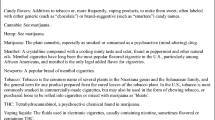Abstract
Promoting tobacco control policies in rural tobacco-growing communities presents unique challenges. The purpose of this study was to assess smoke-free coalition cohesiveness in rural communities and identify coalition members’ perceived barriers or divisive issues that impede the development of smoke-free policies. A secondary aim was to evaluate differences in coalition cohesiveness between advocates in communities receiving stage-based, tailored policy advocacy assistance versus those without assistance. Tobacco control advocates from 40 rural Kentucky communities were interviewed by telephone during the final wave of a 5-year longitudinal study of community readiness for smoke-free policy. On average, five health advocates per county participated in the 45-min interview. Participants rated coalition cohesiveness as not at all cohesive, somewhat cohesive, or very cohesive, and answered one open-ended question about potentially divisive issues within their coalitions. The mean age of the 186 participants was 48.1 years (SD = 13.3). The sample was predominantly female (83.6 %) and Caucasian (99.5 %). Divisive concerns ranged from rights issues, member characteristics, type of law, and whether or not to allow certain exemptions. Three of the divisive concerns were significantly associated with their rankings of coalition cohesiveness: raising tobacco in the community, the belief that smoke-free would adversely affect the economy, and government control. Educating coalition members on the economics of smoke-free laws and the actual economic impact on tobacco-growing may promote smoke-free coalition cohesiveness. More resources are needed to support policy advocacy in rural tobacco-growing communities as well as efforts to reduce the divisive concerns reported in this study.

Similar content being viewed by others
References
Cramer, M. E., Atwood, J. R., & Stoner, J. A. (2006). A conceptual model for understanding effective coalitions involved in health promotion programming. Public Health Nursing, 23(1), 67–73. doi:10.1111/j.0737-1209.2006.230110.x.
Brieger, W. (2006). Community coalitions. http://ocw.jhsph.edu/courses/socialbehavioralfoundations/PDFs/Lecture14.pdf. Accessed October 30, 2013.
Marchand, L., Fowler, K. J., & Kokanovic, O. (2006). Building successful coalitions for promoting advance care planning. American Journal of Hospital Palliative Care, 23(2), 119–126.
Brown, C. R. (1984). The art of coalition building: A guide for community leaders. New York, NY: American Jewish Committee.
Boydell, K. M., & Volpe, T. (2004). A qualitative examination of the implementation of a community–academic coalition. Journal of Community Psychology, 32(4), 357–374.
Center for Prevention Research, Development. (2006). Evidence-based practices for effective community coalitions. Champaign, IL: Center for Prevention Research and Development, Institute of Government and Public Affairs, University of Illinois.
California Department of Health Services Tobacco Control Section. (1998). A model for change: The California experience in tobacco control. Sacramento, CA: California Department of Health Services.
Centers for Disease Control and Prevention. (2007). Best practices user guide: Coalitions. http://www.cdc.gov/tobacco/stateandcommunity/bp_user_guide/pdfs/user_guide.pdf. Accessed June 12, 2013.
US Department of Health, Human Services. (2000). Reducing tobacco use: A report of the Surgeon General. Atlanta, GA: Centers for Disease Control and Prevention, National Center for Chronic Disease Prevention and Health Promotion, Office on Smoking and Health.
Americans for Nonsmokers’ Rights Foundation. (2013). Overview list—how many smokefree laws? http://www.no-smoke.org/pdf/mediaordlist.pdf. Accessed October 1, 2013.
Lynch, B., & Bonnie, R. (Eds.). (1994). Growing up tobacco-free: Preventing nicotine addiction in children and youth. Washington, DC: Committee on Preventing Nicotine Addiction in Children and Youths, Institute of Medicine (IOM), The National Academies Press.
Centers for Disease Control and Prevention. (2009). Guide to community preventive services: Reducing tobacco use and secondhand smoke exposure. http://www.thecommunityguide.org/tobacco/default.htm.
American Lung Association. (2012). Cutting tobacco’s rural roots: Tobacco use in rural communities. http://www.lung.org/assets/documents/publications/lung-disease-data/cutting-tobaccos-rural-roots.pdf. Accessed June 12, 2013.
Cheah, Y. N., Chong, Y. H., & Neoh, S. L. (2006). A framework for cohesive healthcare coalition formation. Studies in Health Technology and Informatics, 124, 575–580.
Department of Transportation. (2001). Community how-to guide on coalition building. http://www.nhtsa.gov/people/injury/alcohol/community%20guides%20html/Book1_CoalitionBldg.html.
Butterfoss, F. D. (2007). Coalitions and partnerships in community health. San Francisco, CA: Jossey-Bass.
King, J., & Beckham, K. (2008). Communication in Coalitions, CDFS-5. http://ohioline.osu.edu/bc-fact/0005.html. Accessed June 12, 2013.
Ferketich, A. K., Liber, A., Pennell, M., Nealy, D., Hammer, J., & Berman, M. (2010). Clean indoor air ordinance coverage in the Appalachian region of the United States. American Journal of Public Health, 100(7), 1313–1318. doi:10.2105/ajph.2009.179242.
SAS Institute I. SAS for Windows: 9.3. Cary, NC2011.
Greenberg, M. T., Feinberg, M. E., Meyer-Chilenski, S., Spoth, R. L., & Redmond, C. (2007). Community and team member factors that influence the early phase functioning of community prevention teams: The PROSPER project. Journal of Primary Prevention, 28(6), 485–504. doi:10.1007/s10935-007-0116-6.
Southern Legislative Conference. (2005). SLC regional resource. Southern legislative conference of the Council of State Governments, Atlanta, GA. January. https://www.slcatlanta.org/Publications/AgRD/tobacco_buyout.pdf. Accessed November 2013.
Hahn, E. J. (2010). Smoke-free legislation: A review of health and economic outcomes research. American Journal of Preventive Medicine, 39(6 Suppl 1), S66–S76. doi:10.1016/j.amepre.2010.08.013.
York, N. L., Rayens, M. K., Zhang, M., Jones, L. G., Casey, B. R., & Hahn, E. J. (2010). Strength of tobacco control in rural communities. Journal of Rural Health, 26(2), 120–128. doi:10.1111/j.1748-0361.2010.00273.x.
Acknowledgments
The project described was supported by Award Number R01HL086450 from the National Heart, Lung, And Blood Institute (E. Hahn, PI). The content is solely the responsibility of the authors and does not necessarily represent the official views of the National Heart, Lung And Blood Institute or the National Institutes of Health.
Author information
Authors and Affiliations
Corresponding author
Rights and permissions
About this article
Cite this article
Butler, K.M., Begley, K., Riker, C. et al. Smoke-Free Coalition Cohesiveness in Rural Tobacco-Growing Communities. J Community Health 39, 592–598 (2014). https://doi.org/10.1007/s10900-013-9804-8
Published:
Issue Date:
DOI: https://doi.org/10.1007/s10900-013-9804-8




